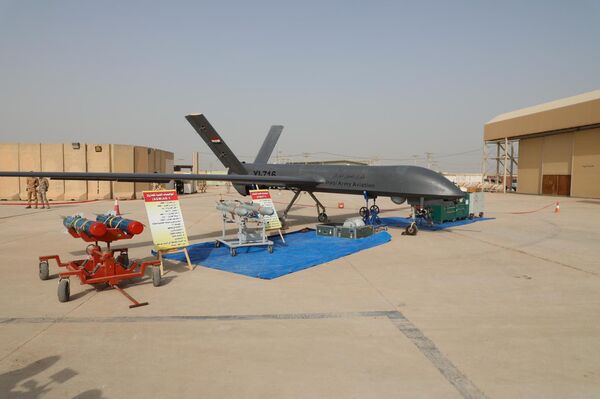
A CH-4 UAV displayed with weapons at the Iraqi Army Aviation Command's area at Balad Air Base in August 2022. (Iraqi Ministry of Defence)
The Iraqi military has significantly increased the number of hours its intelligence, surveillance, and reconnaissance (ISR) aircraft are flying, according to the latest quarterly report from the US Department of Defense's Office of Inspector General (OIG).
Released on 2 May and drawing on information supplied by the US-led coalition, the report said Iraqi fixed-wing ISR aircraft flew 85 hours in January, 139 hours in February, and 253 hours in March.
While the Iraqi Air Force now uses its King Air 350 surveillance aircraft mainly in the light transport role, it increased their ISR hours from nine in January to 32 in February. The Iraqi Air Force's only other manned fixed-wing ISR aircraft are its modified Cessna C-208 Caravans, which were credited with 59 hours in the quarter.
The Chinese-made CH-4 unmanned aerial vehicles (UAVs) operated by the Iraqi Army Aviation Command (IAAC) appear to have provided most of the additional ISR hours, flying 37 in January and 86 in February, according to the report. It did not include a figure for their performance in March but said the UAVs were not used to carry out airstrikes even though they can be armed with guided weapons.
The CH-4s were grounded for years because of maintenance problems, until August 2022, when the Iraqi Ministry of Defence announced they were being returned to service under a contract signed with their manufacturer the previous year.
Photographs appeared later that month, showing what appeared to be the wreckage of one that purportedly crashed in Yathrib, which is close to Balad Air Base, where the IAAC squadron that operates the CH-4s is based.
Looking to read the full article?
Gain unlimited access to Janes news and more...







